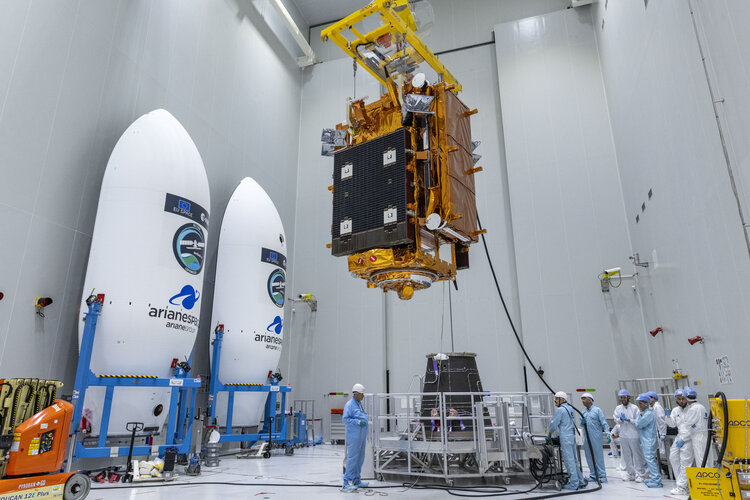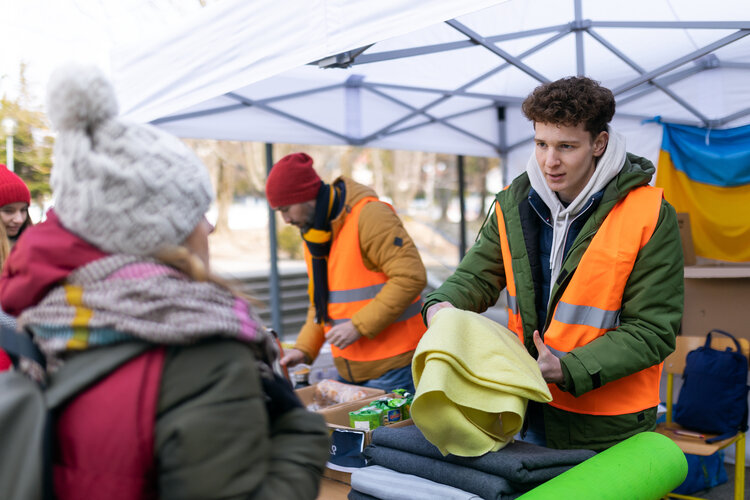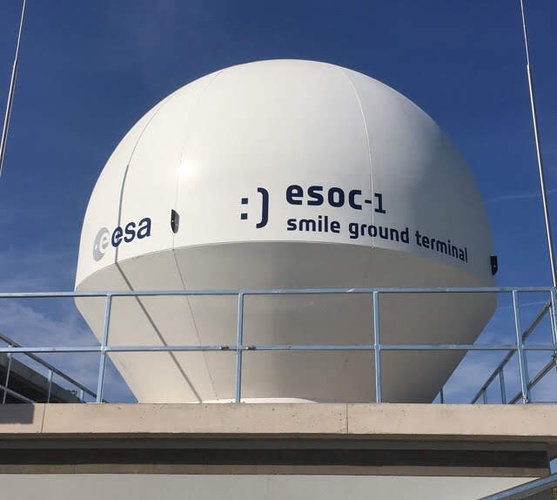Planet and Global Fishing Watch advance ocean monitoring with expanded collaboration
Friday, 22 November 2024 11:40 Planet Labs PBC (NYSE: PL), a leader in Earth data and analytics, has announced an expanded partnership with Global Fishing Watch, a nonprofit focused on ocean governance through increased transparency of human activities at sea. The newly signed six-figure agreement enhances their existing collaboration, allowing Global Fishing Watch to leverage PlanetScope satellite data and Machine Learning (
Planet Labs PBC (NYSE: PL), a leader in Earth data and analytics, has announced an expanded partnership with Global Fishing Watch, a nonprofit focused on ocean governance through increased transparency of human activities at sea. The newly signed six-figure agreement enhances their existing collaboration, allowing Global Fishing Watch to leverage PlanetScope satellite data and Machine Learning ( Frontgrade Gaisler introduces GR716B for next-generation satellite applications
Friday, 22 November 2024 11:40 Frontgrade Gaisler has unveiled its latest radiation-hardened microcontroller, the GR716B, offering a leap forward in energy-efficient and multifunctional space-grade technology. Building on the GR716A, the GR716B is designed to meet the growing demands of increasingly complex and ambitious space missions by ensuring reliable performance across diverse operational scenarios.
The GR716B is
Frontgrade Gaisler has unveiled its latest radiation-hardened microcontroller, the GR716B, offering a leap forward in energy-efficient and multifunctional space-grade technology. Building on the GR716A, the GR716B is designed to meet the growing demands of increasingly complex and ambitious space missions by ensuring reliable performance across diverse operational scenarios.
The GR716B is Sierra Space advances certification for LIFE 10 space habitat technology
Friday, 22 November 2024 11:40 Sierra Space, a prominent player in the commercial space sector and defense technology, has announced the successful completion of its sixth stress test and fourth Ultimate Burst Pressure (UBP) test for the LIFE 10 commercial space station module. These milestones bring the Large Integrated Flexible Environment (LIFE) platform closer to certification for human habitation, meeting NASA's stringen
Sierra Space, a prominent player in the commercial space sector and defense technology, has announced the successful completion of its sixth stress test and fourth Ultimate Burst Pressure (UBP) test for the LIFE 10 commercial space station module. These milestones bring the Large Integrated Flexible Environment (LIFE) platform closer to certification for human habitation, meeting NASA's stringen What we know about Russia's Oreshnik missile fired on Ukraine
Friday, 22 November 2024 11:40 The new intermediate-range ballistic missile called Oreshnik used by Russia in a strike on Ukraine is a nuclear-capable weapon that has not been previously mentioned in public.
In an unscheduled television appearance on Thursday, Russian President Vladimir Putin said the strike on the city of Dnipro had tested in combat conditions "one of the newest Russian mid-range missile systems".
He
The new intermediate-range ballistic missile called Oreshnik used by Russia in a strike on Ukraine is a nuclear-capable weapon that has not been previously mentioned in public.
In an unscheduled television appearance on Thursday, Russian President Vladimir Putin said the strike on the city of Dnipro had tested in combat conditions "one of the newest Russian mid-range missile systems".
He Predicting supernova explosions with advanced simulations
Friday, 22 November 2024 11:40 A research team led by Wun-Yi Chen and Ke-Jung Chen at the Institute of Astronomy, Academia Sinica (ASIAA) has unveiled critical insights into the physics of supernova shockwaves through advanced computational simulations. Leveraging the high-performance Kawas computing cluster at ASIAA, the team spent over two years developing the world's first two-dimensional, multi-wavelength radiation-hydrod
A research team led by Wun-Yi Chen and Ke-Jung Chen at the Institute of Astronomy, Academia Sinica (ASIAA) has unveiled critical insights into the physics of supernova shockwaves through advanced computational simulations. Leveraging the high-performance Kawas computing cluster at ASIAA, the team spent over two years developing the world's first two-dimensional, multi-wavelength radiation-hydrod Ascending Node and Pinkmatter join forces to enhance earth observation imaging
Friday, 22 November 2024 11:40 Ascending Node Technologies, a leader in mission management solutions, and Pinkmatter, known for its expertise in satellite sensor calibration and image processing, have announced a strategic partnership aimed at boosting the accuracy and reliability of Earth observation (EO) missions in low Earth orbit (LEO).
The collaboration will enable satellites, moving at speeds of 29,000 kilometers
Ascending Node Technologies, a leader in mission management solutions, and Pinkmatter, known for its expertise in satellite sensor calibration and image processing, have announced a strategic partnership aimed at boosting the accuracy and reliability of Earth observation (EO) missions in low Earth orbit (LEO).
The collaboration will enable satellites, moving at speeds of 29,000 kilometers SpaceX chalks up 82nd Space Coast launch of the year
Friday, 22 November 2024 11:34This request seems a bit unusual, so we need to confirm that you're human. Please press and hold the button until it turns completely green. Thank you for your cooperation!
Press and hold the button
If you believe this is an error, please contact our support team.
185.132.36.159 : ba50e301-5baa-4624-a22c-36910e73
Media invitation: Proba-3 pre-launch media briefings
Friday, 22 November 2024 10:30Press Release N° 65–2024
ESA’s Proba-3 mission will launch on a Polar Satellite Launch Vehicle (PSLV) from the Indian Space Research Organisation’s Satish Dhawan Space Centre (SHAR) on 4 December.
Europe weighs impact of Trump administration on space cooperation
Friday, 22 November 2024 09:39

China quietly tested its first inflatable space module in orbit
Friday, 22 November 2024 08:55
Moving Sentinel-1C to Vega-C's Vampire payload adapter
Friday, 22 November 2024 08:43 Image:
Moving Sentinel-1C to Vega-C's Vampire payload adapter
Image:
Moving Sentinel-1C to Vega-C's Vampire payload adapter Earth from Space: ‘Angry husband’ eruption
Friday, 22 November 2024 08:00 Image:
This Copernicus Sentinel-2 image from 13 November 2024 shows the Lewotobi Laki Laki volcano eruption on the island of Flores in southern Indonesia.
Image:
This Copernicus Sentinel-2 image from 13 November 2024 shows the Lewotobi Laki Laki volcano eruption on the island of Flores in southern Indonesia. MapGuard: Advancing emergency evacuation capabilities in the Baltics
Friday, 22 November 2024 07:38
In emergency evacuations, access to reliable information can mean the difference between life and death. As our world faces growing challenges from natural disasters and conflicts, the need for rapid, accurate data during evacuations is vital.
Open-to-use SMILE antenna wins hertz and minds
Friday, 22 November 2024 07:00
On 10 November 2024, the final of three Australian CubeSats reentered the atmosphere. Like many other small satellite missions, they benefitted from the SMILE lab for tracking and monitoring.


